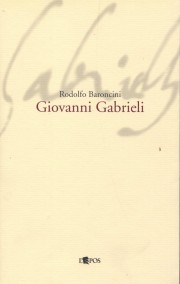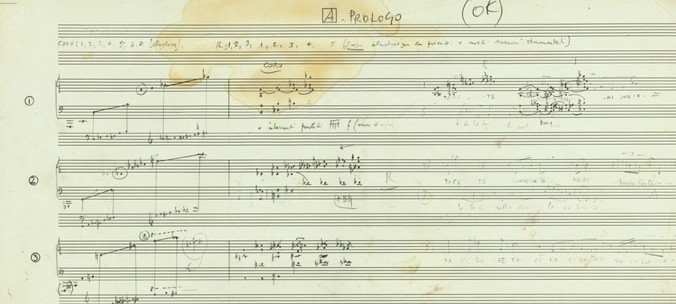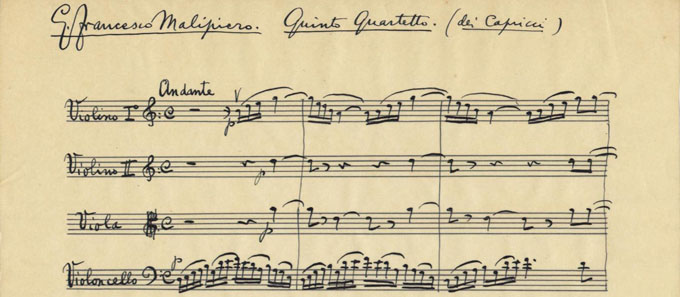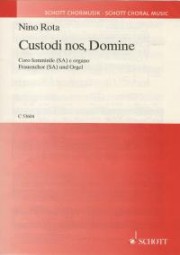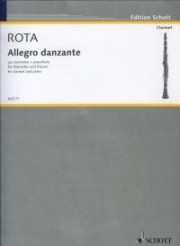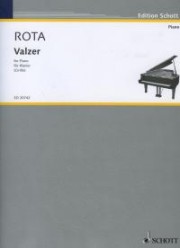Music from the Archives of the Giorgio Cini Foundation Institute of Music
A Concert Series in Memory of Giovanni Morelli
Venice, Teatro La Fenice
Music from the Archives of the Giorgio Cini Foundation Institute of Music
A Concert Series in Memory of Giovanni Morelli
19, 24, 26, 28 July 2013, Teatro La Fenice, Venice
in collaboration with the Giorgio Cini Foundation
These concerts are part of a number of initiatives organised by the Giorgio Cini Foundation Institute of Music to commemorate Giovanni Morelli. The series is a way of putting to good use the heritage of bequests of 20th-century composers kept in the Foundation archives.
The musicians in the four concerts will perform music from the historical archives of Alfredo Casella, Gino Gorini, Gian Francesco Malipiero, Nino Rota, as well as the recently acquired Giacomo Manzoni Archive. The second concert is also intended to mark the centenary year of the birth of the great Polish composer Witold Lutosławski.
VIOLE A SAN GIORGIO
Teatro La Fenice: Sale Apollinee
19 July 2013, 6 pm
viola: Morgan O’Shaughnessey
piano: Jakub Tchorzewski
Programme
Nino Rota, Sonata in D (1945)
Gino Gorini, Sonata for Viola (1944/74)
Igor Stravinsky, Elegy for Viola Solo (1944)
Johannes Brahms, Sonata in F Minor op. 120 no. 1
JEUX VÉNITIENS
Teatro La Fenice: Sale Apollinee
24 July 2013, 6 pm
In the centenary year of the birth of Witold Lutosławski
violin: Jessica Oddie
piano: Jakub Tchorzewski
Programme
Witold Lutosławski, Piano Sonata (1934)
Witold Lutosławski, Subito for Violin and Piano (1992)
Giacomo Manzoni, Furioso for Violin and Piano (1996)
Karol Szymanowski, Sonata for Violin and Piano op. 9 (1904)
A DUE E A TRE
Teatro La Fenice: Sale Apollinee
26 July 2013, 6 pm
violin: Kumiko Sakamoto
cello: Bridget Pasker
piano: Jakub Tchorzewski
Programme
Gino Gorini, Sonata for Cello and Piano (1938)
Igor Stravinsky, Suite Italienne for Violin and Piano (1933)
Alfredo Casella, Sonata a Tre op. 62 (1938)
GORINI – INSPIRATIONS
Teatro La Fenice: Sale Apollinee
28 July 2013, 6 pm
violin: Jessica Oddie
violin: Kumiko Sakamoto
viola: Morgan O’Shaughnessey
cello: Bridget Pasker
piano: Jakub Tchorzewski
Programme
Gian Francesco Malipiero, Quartetto per archi n. 5 “Dei capricci” (1941/1950)
Dmitri Shostakovich, Piano Quintet op. 57 (1940)
Gino Gorini, Piano Quintet (1946)
